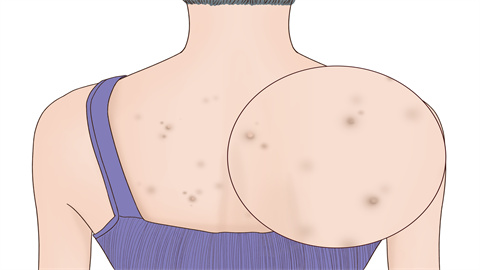Why Does Aging Lead to Melanin Deposition?
Normally, the causes of melanin deposition due to aging may include changes in melanocytes, decreased function of keratinocytes, reduced overall metabolic rate, effects of sex hormone fluctuations, and accumulated UV damage. The analysis is as follows:

1. Melanocyte Changes: With increasing age, the function of melanocytes in the skin gradually changes. Melanocytes may become dysfunctional, more sensitive to certain stimuli, and may overproduce melanin. Intense Pulsed Light (IPL) therapy can be used. IPL therapy utilizes light energy of specific wavelengths acting on the skin surface, which can oxidize subcutaneous melanin and stimulate collagen regeneration, making the skin fair and smooth. The general reference price for IPL therapy is 2000-4000 yuan per session. Usually, some improvement may be observed after 3-5 treatments, but there are risks, such as possible pain.
2. Decreased Function of Keratinocytes: With aging, the turnover rate of keratinocytes slows down, metabolic capacity weakens, and the efficiency of uptake and excretion of melanin decreases, making melanin more likely to accumulate in the skin, thus worsening melanin deposition. It is recommended to use skincare products to maintain skin hydration and enhance skin barrier function, which helps improve keratinocyte function and reduce pigmentation.
3. Reduced Overall Metabolic Rate: As the human body ages, metabolic activities such as skin blood circulation and material exchange significantly slow down, leading to delayed transport and metabolism of melanin after its formation. Accumulation over time causes increased melanin deposition. Engaging in moderate exercise to enhance the body's metabolic rate helps accelerate melanin excretion.
4. Influence of Sex Hormone Fluctuations: When women enter perimenopause, estrogen levels drop significantly. These hormonal fluctuations affect the skin condition, reducing collagen fibers and elasticity, while also interfering with normal melanin metabolism, making melanin deposition more likely. Maintaining sufficient sleep, regular作息, and a balanced diet help maintain bodily balance and reduce the impact of sex hormone fluctuations on melanocytes.
5. Accumulated UV Damage: With aging, the skin's repair capacity weakens, and accumulated damage from previous UV exposure continues to manifest, stimulating melanocytes to continuously produce more melanin. One can visit a reputable hospital for laser treatment, which uses laser technology to destroy melanin particles in the skin, achieving the effect of removing pigmentation. The general reference price for laser treatment is 1000-2000 yuan per session. Usually, some improvement may be observed after 3-5 treatments, but redness and swelling may occur after treatment.
In addition, one can visit a reputable hospital for chemical peeling. This involves applying chemical solutions such as salicylic acid or fruit acid onto the skin surface to promote the shedding of the superficial skin layer, accelerating melanin metabolism. The general reference price for chemical peeling is 1500-2500 yuan per session, and usually some improvement may occur after 1-2 months. However, this method must be performed by a doctor to avoid complications such as skin damage and infection.








